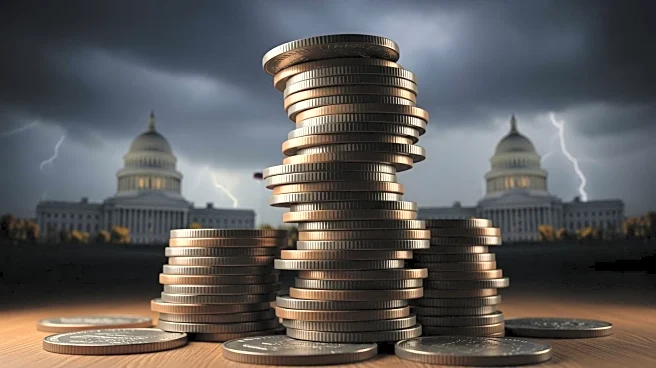What's Happening?
The U.S. national debt has surpassed $38 trillion, marking a rapid increase of $1 trillion in just over two months, according to the U.S. Treasury Department. This acceleration is attributed to deficit
spending, rising interest costs, and the economic impact of the ongoing government shutdown. Interest payments on the debt have become the fastest-growing category in the federal budget, projected to reach $14 trillion over the next decade. The partial government shutdown is exacerbating fiscal challenges, adding billions to federal expenses and delaying economic activity.
Why It's Important?
The rapid increase in national debt poses significant economic risks, including upward pressure on inflation and interest rates, which could constrain growth and increase borrowing costs for households and businesses. The debt trajectory threatens to lead to sustained job and income losses, as highlighted by recent analyses. The situation also raises concerns about the U.S. credit rating and the long-term global standing of the U.S. dollar. Despite some revenue from tariffs, the fiscal outlook remains challenging, with political gridlock hindering effective fiscal reforms.
What's Next?
Lawmakers face pressure to implement fiscal reforms to address the growing debt and its economic implications. The ongoing government shutdown adds urgency to resolving budgetary issues, as delays in decision-making could worsen the fiscal situation. Analysts and economists will continue to monitor the impact of debt levels on economic indicators and the potential for policy changes to stabilize the fiscal outlook.











